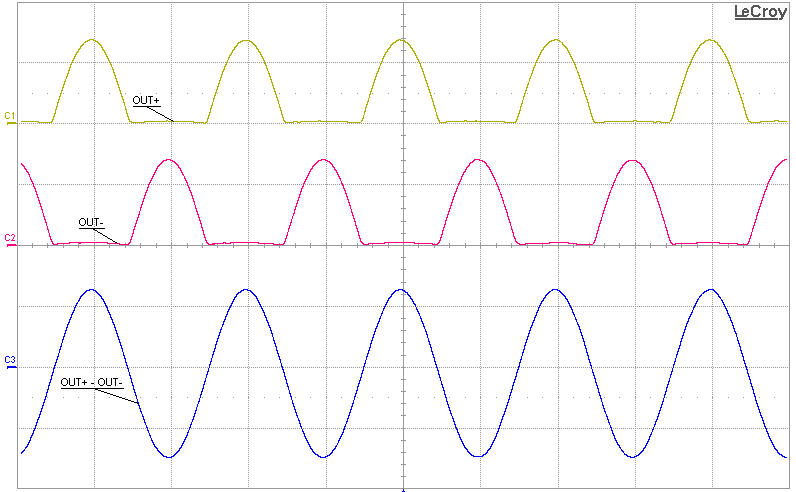ZHCSQQ4C November 2011 – June 2022 TPA2015D1
PRODUCTION DATA
- 1 特性
- 2 应用
- 3 说明
- 4 Revision History
- 5 Device Comparison Table
- 6 Pin Configuration and Functions
- 7 Specifications
- 8 Parameter Measurement Information
-
9 Detailed Description
- 9.1 Overview
- 9.2 Functional Block Diagram
- 9.3 Feature Description
- 9.4 Device Functional Modes
- 10Application and Implementation
- 11Power Supply Recommendations
- 12Layout
- 13Device and Documentation Support
- 14Mechanical, Packaging, and Orderable Information
9.3.2.2 Improved Class-D Efficiency
The TPA2015D1 output stage uses a modulation technique that modulates the PWM output only on one side of the differential output, leaving the other side held at ground. Although the differential output voltage is undistorted, each output appears as a half-wave rectified signal.
This technique reduces output switching losses and improves overall amplifier efficiency. Figure 9-4 shows how OUT+, OUT-, and the differential output voltages appear on an oscilloscope.

| C1(YELLOW) is OUT+ | C2(PINK) is OUT– | C3(CYAN) is OUT+ - OUT– |